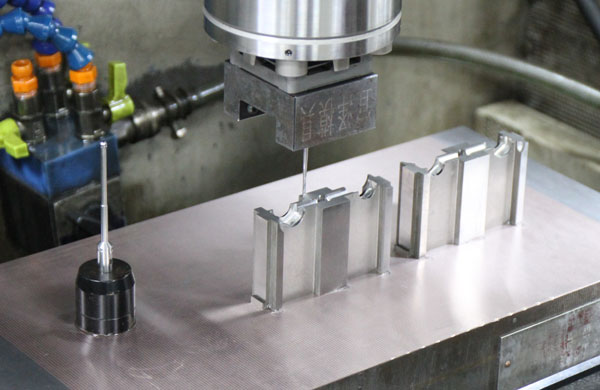In the field of mold processing, a noticeable issue when using CNC milling technology is the reduction of workpiece surface finish. This phenomenon is influenced by multiple factors, significantly impacting the final quality of mold processing parts.
The primary factor lies in the sharpness of the cutting tools. When the tools become dull, they cause greater deformation of the workpiece during cutting, thereby increasing the cutting force. As deformation accumulates, the cutting edge penetrates deeper into the part, and the sudden breakage of chips leaves tiny holes on the workpiece surface, severely damaging its finish.
Secondly, the choice of CNC milling strategy is also crucial. Milling strategies are mainly divided into climb milling and conventional milling. In climb milling, the tool rotation direction is consistent with the worktable feed direction. The tool enters the workpiece smoothly and exits with minimal material residue, producing excellent surface finish. Conversely, in conventional milling, the tool enters the workpiece from the already processed surface. Due to slight vibrations and process variations, the tool may cause minor damage to the precision mold processing part surface, thereby affecting the final finish.
Furthermore, the selection and use of cooling fluids are key factors influencing the surface finish of mold processing parts. Many people often overlook the importance of coolants and lubricants. In reality, choosing the appropriate cooling fluid lubricant can significantly enhance the overall quality of the workpiece surface.
To address these issues, we can take the following measures to optimize the finish of mold processing parts:
Regularly maintain cutting tools: Ensure that the tools remain sharp to reduce workpiece deformation and cutting force.
Select the correct milling strategy: Choose a suitable milling method according to processing needs to maximize surface finish.
Pay attention to the selection and use of cooling fluids: Choose the appropriate cooling fluid lubricant to improve the overall quality of the workpiece surface.

Common Issue of Surface Burning in Mold CNC Milling
Surface burning is another common defect in mold CNC milling, manifesting as burn marks along the processed part's surface, typically indicating overheating during processing.
The main cause of this issue lies in the improper selection of cutting parameters. Incorrect settings for feed rate and cutting speed can severely damage the workpiece, cutting tools, and even the machine tool itself.
To address this issue, we can adopt the following two strategies:
Reduce cutting speed and feed ratio: Slow down the processing to lower the temperature, thereby reducing the occurrence of burning.
Increase the cooling rate: Enhance cooling measures during processing, especially when dealing with materials with poor thermal conductivity (such as titanium). In some extreme cases, both strategies may be necessary to ensure the quality of the workpiece surface.